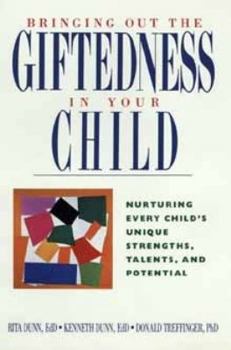Giftedness in Every Child: Unlocking Your Child's Unique Talents, Strengths, and Potentials
Emphasizing a child's potential rather than any static or quantified definition of ''gifted'', it asks the question: ''How is your child talented''? This should challenge parents to examine their child and what they really know about his or her strengths, talents, needs and sustained interests, so that they can respond in appropriate and stimulating ways. Helps parents find the child's strengths and potential, shows how to use the home environment for nurturing and stimulation, how to choose and cooperate with teachers, how to select activities or games, how the parents' own behavior influences a child toward fulfilling its potential and how to determine a child's unique learning style.
Format:Hardcover
Language:English
ISBN:047152803X
ISBN13:9780471528036
Release Date:January 1992
Publisher:Wiley
Length:224 Pages
Weight:1.10 lbs.
Dimensions:0.7" x 6.2" x 9.3"
Customer Reviews
1 rating
Not whether but how
Published by Thriftbooks.com User , 23 years ago
I.Q. and SAT tests are supposed to measure 10 to 15% of one's ability only. The Dunns proposed a broader understanding of "giftedness", not as a label, but as a measure of accomplishments. If we identify the child's learning styles and be sensitive to the varying needs of different developmental stages, all children can become more gifted. Though this book was written almost 10 years ago, I'm glad that it is still available. It is a simple, very readable and practical book--an excellent introduction to the Dunn's basic ideas. A useful questionnaire is included for identifying the child's learning style.






